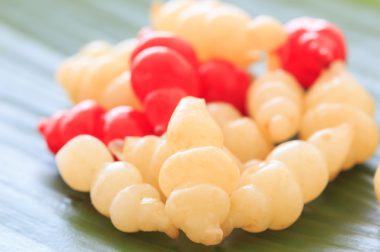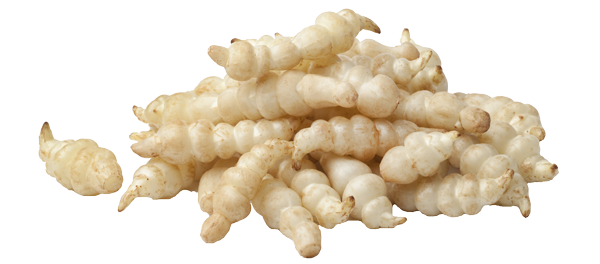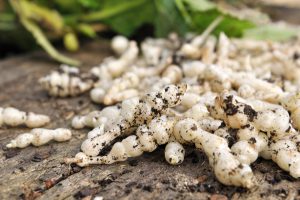Recipes we love
See all recipesSautéed Chinese Artichokes
Choose very white Chinese artichokes, as they have a thinner skin. The intestines tolerate Chinese a...
Health
benefits
A source of glucides
Chinese artichokes are rich in glucides, with similar calorie content to tubers like potatoes. It has not been widely studied nutritionally and there is very little exact data on its micronutrient content.
Nutritional
composition
When is the right time to eat it?
In the winter.
It is harvested in November. It can be found on the shelves until March.
Vegetable patch
or urban balcony?
Chinese artichoke is a rhizomatous plant (continuously growing underground root) that grows well in lightly sandy, well-drained, humus-rich soils, with good sun exposure.
To learn everything you need to know about growing chinese artichoke, read the page on growing advice.
Choosing
and storing
Choosing the best Chinese artichokes:
- The tubers should be firm, not rubbery, milky white in color with no brown marks.
Storing Chinese artichokes:
- It can only be stored exposed to the air for a short time because it has a tendency to oxidize.
- In the refrigerator: Two to three days in the vegetable drawer.
Tips
and tricks
How to prepare Chinese artichokes:
Chinese artichokes should be thoroughly washed to ensure all dirt is removed as it not peeled.
It only takes a short time to cook, ideally by steaming (10 to 12 minutes maximum), to conserve its crunchy texture.
Chinese artichoke goes well with:
It can be eaten in salads, en gratin, or as a rissole in the frying pan.
Chinese artichokes go very well with roasted meats in sauces, cured ham, lardons, and also fish like sole and trout. Crème fraîche also goes very well with Chinese artichoke.
Herbs like parsley and chives also bring out its flavor.
Can everyone eat it?

Young children
Serve Chinese artichokes to children fried with other vegetables from the age of 12 months. Children like the slightly sweet flavor of Chinese artichoke, somewhere between artichokes and salsify. They also enjoy its spiral shape.
And everyone else
Although it has been somewhat forgotten by younger people, it is popular with older people. However, new generations have been rediscovering the vegetable since it reappeared on the shelves. Its unusual taste and shape make it an original and popular dish for people of all ages.
See plenty of other tips for encouraging children to eat vegetables
Where do they come from?
Origins and varieties
Origins
It originated in the Far East where it is a traditional ingredient, and was exported to Europe, to France in particular, at the end of the 19th century, where it was introduced to the village of Crosne (Essonne-France), which took its name from the vegetable (crosne is the French for Chinese artichoke).
Varieties
It is a small rustic root vegetable that comes from an herbaceous plant with continuously growing roots, which grows up to 30 to 40 cm high. The pearly white tubers grow in smallish beads on the underground stems. They are shaped like rings and look like caterpillars. Although called ‘Chinese artichoke’, it is not in fact related to the artichoke.



 Bean sprouts
Bean sprouts  Fava beans
Fava beans  Vegetable growing: Brussels sprout
Vegetable growing: Brussels sprout 










